 Check out these interesting Nile River Facts for Kids. Learn about where the Nile River is, what benefits had it brought to Ancient Egypt, how long it is, and more. Read more science facts about rivers and streams for kids here. The Nile river stretches over 4,132 miles and is the longest river in the world. Although it is generally associated with Egypt, only 22% of its course runs through Egypt. It has a great significance in regards to Ancient Egypt since most of Egypt's historical sites are located along the banks of the river including cities of Luxor and Cairo. It had also created a fertile green valley across the desert of Egypt. It was said that Ancient Egypt could not have existed without this river since rainfall is almost non-existent in Egypt. Most Egyptians (more or less half of Egypt's population) built homes near the Nile as it provided water, food, transportation and excellent soil for growing crops.
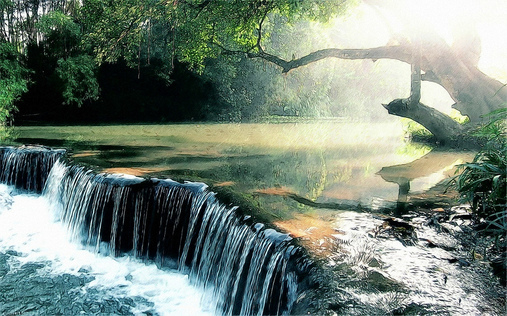
Check out these interesting Amazon River Facts for Kids. The Amazon River in South America is the second largest river in the world after the Nile river in Africa. At over 4,000 miles long, this mighty rives runs from the Andes mountains in Peru to the Atlantic Ocean. It contains more water than any other river in the world. The Amazon is so enormous that it actually contains more water than the Mississippi, the Nile and Yangtze combined. Discover more fun facts about rivers and streams here.
The river is home to many species of animals, such as the Amazon river dolphin – the largest species of river dolphin, the anaconda, more than 5,000 different species of fish – including the piranha. Piranhas are meat eating type of fish, attacking in groups, preying on livestock that strays into the water. As for the anacondas, they lurk in the shallow waters of the Amazon Basin, occasionally attacking larger animals such as goats that get close to the water.
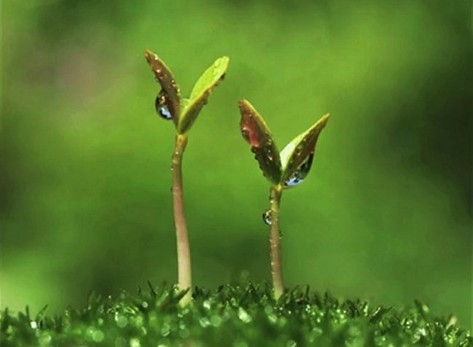 Understanding and learning how plants grow can be interesting for kids. How do plants grow? A very important question your kid might throw at you one day. Remember, we need plants for our own survival, not just for food but mainly for the oxygen they give out and that we breathe in, or else, we'll die. Everything that lives on earth has a life cycle. Plants are born and grow up just like babies are born and grow up into adults. Plants start they lives as tiny seeds. Once the seeds have the right conditions, the plant inside starts to grow and get bigger. It pushes open the seed coat – sort of like hatching out of an egg. Tiny roots work its way down while tiny stems go its way up. Then, new leaves will appear on the plant. Learn more Germination Facts for Kids here.
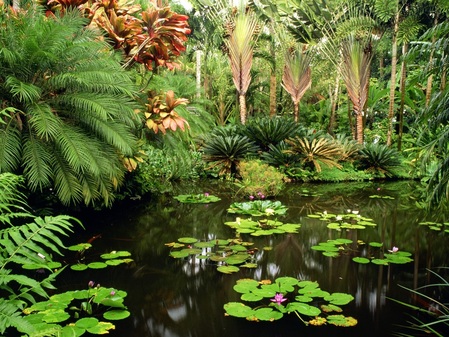 Learn about Plants Learn about Plants
When you think of plants, you probably think of flowers, vegetables and trees. But there are many other kinds of plants too. So, let’s understand few Plants Facts for kids.
Nearly all plants have roots that live in the soil. Some live in the water and a few live in air. Plants need water, sun, minerals and carbon dioxide to grow and survive. They get energy from the sun. Their leaves have a substance called chlorophyll which changes energy from the sun into food. Plants reproduce or make more plants through flowers. Pollens are substance from the plants that when spread to other plants can produce fruit and seeds. And these seeds make new plants.
Plants may not seem as exciting as most animals or the planets in the solar system, but without them there would be no life on earth. For more fun plants facts for kids, go here.
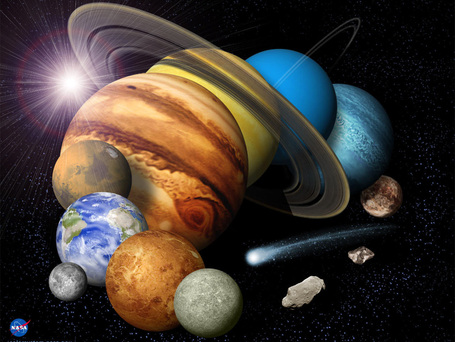 Discover Solar System Facts for Kids Discover Solar System Facts for Kids Space is a huge place with a lot to explore. Sun is found at the center of our solar system with eight planets revolving around it, along with bits of dust, comets and meteorites, as well as billions of stars. Here's some fun solar system facts for kids that are surely entertaining for them.
Several theories have been made as to how the solar system began and people have been arguing over time about this. However, for many, it is believed that God created the universe. Others presumed that the solar system started the process itself.
The planets nearest the earth, Mercury, Venus, Earth and Mars are called terrestrial planets because they are made of solid matter, mostly of rock and dust. Those at the near edge of the solar system, Jupiter, Saturn, Uranus and Neptune, are called the gas giants because they are mostly gas and liquid and don't have a solid surface.
Are there other solar systems? Scientists believe there are trillions of other stars like the Sun which may also have their own solar systems. And it's likely that some of these solar systems may contain life.
Read all about the solar system facts here.
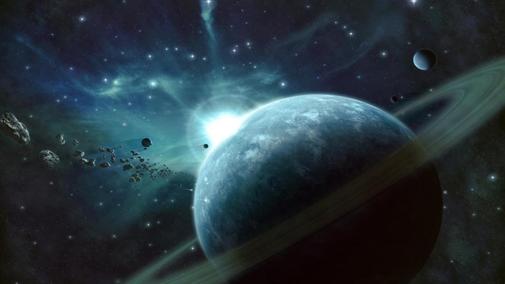 Discover Neptune Facts for Kids Discover Neptune Facts for Kids Neptune, the farthest planet in the solar system, is 2.8 billion miles from the sun. Read on for some cool Neptune Facts for Kids.
Neptune, like Uranus is made of methane gas which creates the blue appearance on the planet. This planet is a very windy place. No other planet in the Solar System has winds that are as strong as Neptune's. It also has some of the fiercest storms in the solar system, three times stronger than those on Jupiter and nine times stronger than Earth's storms.
Triton is the first moon discovered in Neptune and also the coldest spot found in the universe so far, with a temperature of -391 degrees Fahrenheit. Discover more Kids Science Facts about Neptune here.
 Discover Saturn Facts for Kids Discover Saturn Facts for Kids Known as the son of Uranus and named after the Roman god of agriculture, Saturn was first seen by the famous scientist, Galileo through a simple telescope in 1610. Saturn is similar to Jupiter in many ways though it is much smaller. It is the second largest planet in the solar system and a gas giant like Jupiter. Go here to learn more Saturn Facts for Kids. Because Saturn spins so quickly, a day is just 10 hours and 39 mins. However, a year last 10,759 days.
|







 RSS Feed
RSS Feed